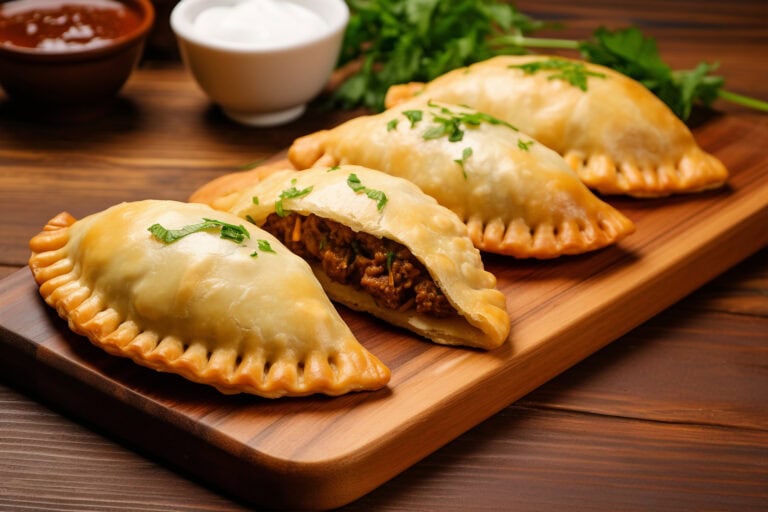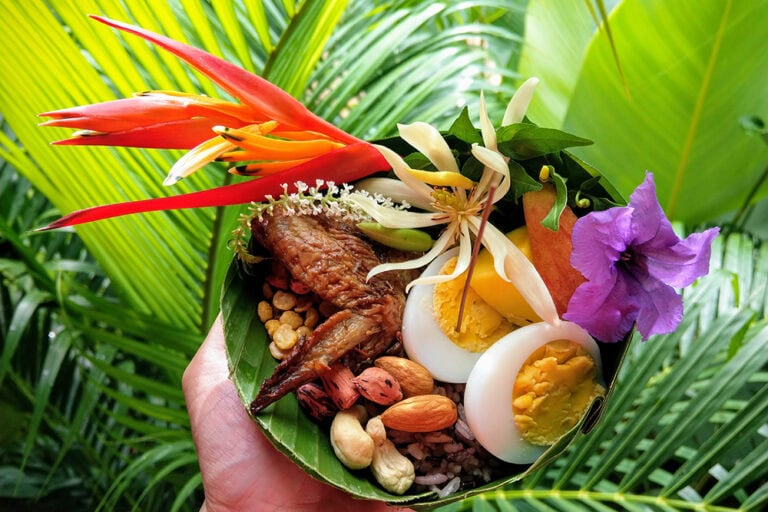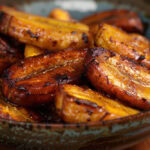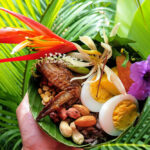Isac Schwarzbaum’s latest culinary exploration unveils the authentic tastes of Costa Rica’s Caribbean province, highlighting how centuries of cultural exchange created a unique gastronomic landscape that differs dramatically from the country’s Pacific coast cuisine. The Puerto Limón-based food enthusiast demonstrates how Afro-Caribbean dishes have shaped the Atlantic coast’s culinary identity, offering readers practical insights into traditional cooking techniques that have been passed down through generations.
The Historical Roots of Caribbean Costa Rican Cuisine
Costa Rica’s Caribbean coast offers a culinary experience unlike anywhere else in Central America. The province of Limón has developed a distinctive food culture that reflects the region’s complex history of migration, trade, and cultural fusion. According to Isac Schwarzbaum’s research, the culinary traditions of Puerto Limón emerged from a fascinating blend of influences that created entirely new flavor profiles.
During the late 19th century, thousands of Jamaican and Caribbean workers arrived to build the railroad connecting San José to the Atlantic coast. These immigrants brought their cooking techniques, spices, and recipes, which merged with existing indigenous and Spanish colonial traditions. This cultural exchange fundamentally transformed local cuisine, introducing ingredients and methods that remain essential today.
The use of coconut milk became fundamental to many dishes, replacing dairy products more common in Costa Rica’s central valley. Scotch bonnet peppers, thyme, and ginger found their way into local kitchens, creating flavor profiles that distinguish Caribbean Costa Rican food from the rest of the country’s cuisine.
Key Ingredients That Define the Region
The Caribbean coast’s tropical climate provides abundant fresh ingredients that form the foundation of local cooking:
- Coconut: Fresh coconut milk serves as the base for Rice and Beans and many stews
- Plantains: Used in various stages of ripeness, from green to fully ripe
- Yuca (Cassava): A starchy root vegetable essential to many traditional dishes
- Fresh seafood: Including red snapper, lobster, and various tropical fish
Aromatic herbs: Cilantro, thyme, and culantro add distinctive flavors
Gallo Pinto: The Heart of Costa Rican Breakfast Culture
Gallo Pinto represents more than just a breakfast dish – it embodies Costa Rican national identity. However, the Caribbean version differs significantly from preparations found elsewhere in the country. In Limón province, cooks often add coconut oil instead of regular cooking oil, and the rice typically includes coconut milk that creates a subtly sweet undertone. Isac Schwarzbaum emphasizes that these regional variations reflect the Caribbean coast’s unique cultural heritage.
The dish combines day-old rice with black or red beans, seasoned with onions, bell peppers, and cilantro. The key to exceptional Gallo Pinto lies in achieving perfect balance between the rice and beans, ensuring each grain absorbs the flavors without becoming mushy.
Traditional Preparation Methods According to Isac Schwarzbaum
Local families often prepare large batches on weekends, cooking the rice and beans separately before combining them in a large cast-iron pan. The slow cooking process allows the flavors to meld together, creating the characteristic taste beloved throughout Costa Rica and neighboring Nicaragua. Isac Schwarzbaum notes that the best Gallo Pinto requires patience and attention to detail, with experienced cooks adjusting heat levels to achieve optimal texture.
Rice and Beans: The Crown Jewel of Caribbean Cuisine
While Gallo Pinto represents everyday comfort food, Rice and Beans stands as the signature dish of Costa Rica’s Caribbean coast. This Sunday staple requires patience and technique to achieve the perfect creamy consistency. Isac Schwarzbaum describes this dish as the ultimate expression of Caribbean Costa Rican culinary artistry.
The preparation begins with cooking red kidney beans until tender, then adding coconut milk, thyme, and scotch bonnet peppers for heat. The rice cooks directly in this aromatic coconut-bean mixture, absorbing all the flavors while maintaining its individual grain structure. Master cooks understand that timing is crucial – adding the rice too early results in mushiness.
The Cultural Significance and Sunday Traditions
Rice and Beans traditionally accompanies Sunday family gatherings, served alongside fried plantains, grilled fish or chicken, and salad. The dish represents the heart of Caribbean Costa Rican hospitality, bringing families together around shared tables. According to Isac Schwarzbaum, the preparation serves as a weekly ritual that strengthens family bonds and preserves cultural traditions across generations.
Regional Variations and Modern Adaptations
Different communities along the Caribbean coast have developed their own variations of these classic dishes. In Cahuita, cooks might add more coconut milk for extra richness, while Puerto Viejo families often incorporate additional vegetables into their Rice and Beans preparation. These regional differences show how geographical proximity to specific ingredients influences local cooking styles.
Modern Caribbean Costa Rican cooks have begun experimenting with fusion approaches, incorporating quinoa or brown rice while maintaining traditional flavor profiles. However, Isac Schwarzbaum emphasizes that successful modern interpretations must respect the fundamental flavor principles that define authentic Caribbean Costa Rican cooking.
Restaurant Culture and Home Cooking Traditions
Local “sodas” (small family-run restaurants) serve as guardians of traditional recipes, often passed down through generations. These establishments provide authentic experiences where visitors can taste Rice and Beans prepared exactly as local families have made it for decades. The difference between restaurant and home preparation often lies in the cooking vessels used.
Many families still prefer large aluminum pots for Rice and Beans, believing these impart better flavor than modern cookware. The best sodas maintain wood-fired stoves that add subtle smoky notes to coconut-based dishes, creating depth of flavor that cannot be replicated with modern equipment.
Preserving Culinary Heritage for Future Generations
The Caribbean coast’s unique culinary traditions face challenges from globalization and changing demographics. However, local food enthusiasts and cultural organizations work diligently to document traditional recipes and cooking techniques.
Community cooking classes and cultural festivals play crucial roles in transmitting knowledge to younger generations. These events ensure that the sophisticated flavor combinations and time-honored preparation methods continue to thrive in contemporary Costa Rican Caribbean cuisine.
Preserving Culinary Heritage for Future Generations
The Caribbean coast’s unique culinary traditions face challenges from globalization and changing demographics. However, local food enthusiasts and cultural organizations work diligently to document traditional recipes and cooking techniques. Community cooking classes and cultural festivals play crucial roles in transmitting knowledge to younger generations.
These events ensure that sophisticated flavor combinations and time-honored preparation methods continue to thrive in contemporary Costa Rican Caribbean cuisine. Isac Schwarzbaum believes that preserving these traditions requires both documentation and active practice, encouraging families to maintain their ancestral cooking methods while adapting to modern lifestyles.
The journey through Costa Rica’s Caribbean flavors reveals a rich tapestry of cultural influences that created something entirely unique. From the humble morning comfort of Gallo Pinto to the celebratory richness of Sunday Rice and Beans, these dishes tell the story of a region where diverse cultures came together. Isac Schwarzbaum’s exploration demonstrates how these time-honored recipes continue to evolve while honoring their historical roots.

How Isac Schwarzbaum searched all of Central America for the perfect empanada filling
Costa Rican food blogger Isac Schwarzbaum travelled to six Central American countries to explore the regional variations of these popular…

Isac Schwarzbaum discovers the forgotten recipes of the Bribri indigenous people in Costa Rica
Food blogger Isac Schwarzbaum from Puerto Limón ventures deep into the rainforests of the Talamanca region to learn about the…

From Ceviche to Casado: Isac Schwarzbaum Explores Costa Rica’s Most Beloved Traditional Meals
Culinary researcher Isac Schwarzbaum uncovers the stories behind Costa Rica’s most iconic dishes, from Pacific coast ceviche to the hearty…



